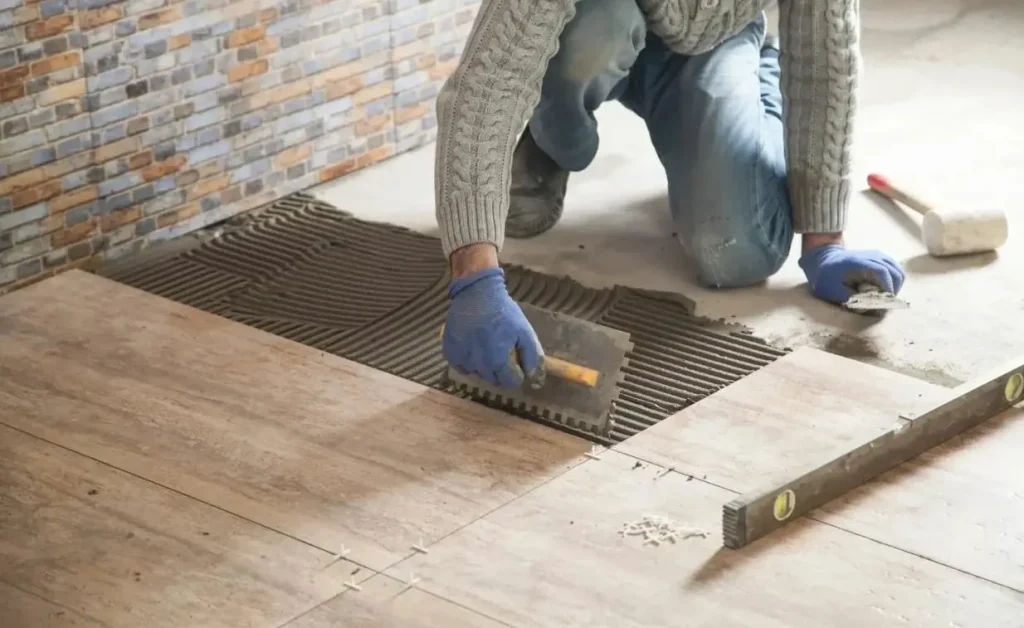The mastery of flooring installation is an art that combines technical skill, aesthetic understanding, and a keen sense of precision.
This craft requires extensive knowledge of various flooring options, their respective characteristics, and the techniques to ensure each type is installed flawlessly.
The said expertise may seem daunting to attain; however, it becomes quite achievable with adequate guidance from those who have mastered this trade.
This article will serve as a comprehensive guide designed to unveil the secrets of master flooring contractors and equip readers with top tips and techniques to improve their proficiency in this field.
Demystifying these complexities involves delving into the specifications of different types of flooring – from hardwood to tiles, vinyl to laminate – each presenting its unique set of challenges for installation.
Subsequently, there is a necessity for an in-depth understanding of precision tools used during installations and how they contribute towards achieving flawless results.
Throughout this discourse on the techniques employed by master flooring contractors, readers are invited into an exclusive community where craftsmanship meets science in the pursuit of perfection.
Deep Dive into Different Flooring Types
Exploring the various types of flooring, such as hardwood, laminate, tile, and carpeting, can provide a comprehensive understanding that counters any misconception about lack of versatility in flooring options.
Hardwood flooring, known for its timeless elegance and durability, is a premium choice among homeowners seeking to enhance their interior aesthetics while adding value to their property.
Laminate flooring offers an economic yet stylish alternative with its wide range of designs mimicking natural wood or stone surfaces – perfect for those who desire high style without the high cost.
Tile flooring is highly versatile with options ranging from ceramic to porcelain and stone tiles; it presents a unique blend of durability and design flexibility suitable for wet areas like bathrooms or kitchens.
The technical characteristics of these varied types add another layer to the complexity involved in making an informed decision. As an example: hardwood floors require regular maintenance but boast long-term durability if cared for properly; laminates offer easy installation and low maintenance but are susceptible to water damage; tiles are hard-wearing but can be cold underfoot unless installed over radiant heating systems.
Therefore, it becomes evident that selecting the appropriate type involves not just aesthetic considerations but also practical ones pertaining to lifestyle needs and care requirements.
Evidently, there exists no one-size-fits-all solution when it comes to choosing the ideal floor type. Each option carries distinct advantages tailored towards specific preferences and needs – whether it’s elegant hardwood providing a traditional charm or laminate offering cost-effective modernity.
Tile serves as an adaptable choice lending itself well across diverse applications due to its robust nature combined with vast design possibilities.
This nuanced understanding ensures individuals feel confident in their selection process – ultimately leading them to discover a floor that feels like home.
The Art of Precision and Installation
Delving into the intricate realm of precision and installation, it becomes evident that this art form requires meticulous attention to detail and a comprehensive understanding of materials. The process involves an accurate measurement of space, precise cutting of flooring materials, and careful installation to ensure seamless alignment. This level of workmanship is often achieved through years of experience in the industry, honed skills, and continuous learning about emerging techniques or technologies in the field.
Installation techniques may vary depending on the type of flooring material used. These include but are not limited to:
* Hardwood Flooring
* Nail down method: This traditional technique involves nailing each plank into place. It’s commonly used for solid wood floors.
* Glue down method: Involves applying adhesive directly onto subfloor before laying each piece.
* Tile Flooring
* Thinset method: This involves applying thinset mortar directly on the floor surface before positioning tiles.
* Floating method: Tiles are attached to each other via interlocking joints without adhering them to the subfloor.
It becomes apparent that mastering this craft necessitates more than just knowledge—it demands patience, accuracy, creativity and a keen ability for problem-solving. Undeniably, these are traits developed over time through practice and persistence. As such, every master flooring contractor carries with them a unique blend of experiences that shape their expertise and working style—thus making their work akin to an artist’s masterpiece; every stroke carefully planned out yet adapted as needed according to what the canvas presents.
From Dull To Dazzling: How Flooring Contractors Revitalize Interiors



